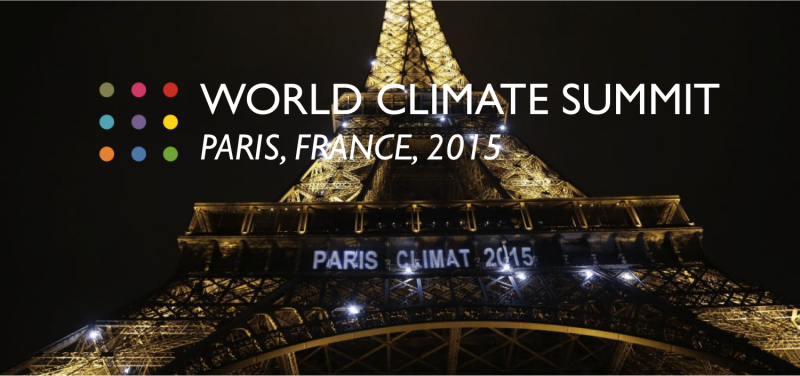Right now, countries around the world are working towards a new, universal agreement on climate change. The new agreement will be adopted at the next climate change conference in Parisat the end of this year. Until then, intense negotiations and political efforts are underway to ensure that the agreement puts the world on a path to climate neutrality in the second half of the century. A world where the global temperature rise stays under two degrees Celsius: a world where the ecological balance of planet Earth is restored. There is a lot at stake. Four international science institutions say 2014 was thewarmest year on record. This year’s Arctic sea ice maximum extent was the smallest on satellite record and also one of the earliest. Heat waves, drought, and wildfire aredamaging harvests in California, Australia and Brazil. Warming and acidifying oceans threaten seafood stocks. Climate change is thought to have contributed to last month’s devastating cyclone in Vanuatu. The sobering list of impacts linked to climate change goes on. Never before has the need to address climate change been so urgent. But never before has the response gathered so much momentum. Governments, businesses, cities and other key players are putting innovative solutions in place to tackle climate change. Reason for hope Recently, European capital cities decided to join forces to pool their efforts to reduce greenhouse gas emissions. They are launching projects to tackle urban sprawl, improve recycling, fight against waste, prioritize public transport, increase electrical mobility and improve energy efficiency. In a joint statement, 26 European mayors said they hoped joining forces to favour green and low-carbon industries for procurement contracts would have a “leverage effect on the private sector that very often aligns its own requirements with the public sector.” The European mayors are not alone. Other cities around the world are implementing innovative solutions too. In Vancouver, Canada, city council voted to support a shift toward using 100% renewable energy sources in order to meet its goal of being the world’s “greenest city.” San Francisco, Sydney, Stockholm and Copenhagen also have similar goals to rely on renewable energy by 2050. In China, Beijing, where pollution averaged more than twice China’s national standard last year, the city announced that it will close the last of its four major coal-fired power plants next year. There are many countries and regions that are also moving toward a low-carbon, highly resilient future. In Latin America, solar power is booming. Latin America is not only the fastest growing regional market for solar in the world, it is also showing the fastest regional growth in the entire history of the solar industry. Latin American solar grew 370% in 2014, and it is expected to triple again in 2015. The shift toward using energy in a smarter way is underway in India and Malaysia, where information and communication technologies (ICTs) are helping industrial and commercial energy consumers monitor, analyze and optimize their use of energy. More than 400 industrial clients in those countries are using ICT-enabled solutions, with an average energy savings of 15-20% – equaling the annual greenhouse gas emissions of 215,000 cars. Thailand is on the verge of a solar energy transformation as private companies have committed to investing at least $2 billion over the next five years in solar power production. The largest solar power generation company in Thailand, Solar Power Company Group, is leading the country down a cleaner path. The company unlocked private financing to construct 36 solar photovoltaic farms accounting for 250 MW of installed capacity last year. Linking on-the-ground action with the negotiations A new, international agreement in Paris is critical to build on the work already underway and to ensure that further action on climate change is enshrined in policies created by national governments around the world. Governments and businesses know the shift to a more sustainable future is inevitable. And they also know it’s much better to act together to drive this transformation now than to wait to react after the most severe impacts arrive. Ahead of the Paris conference, countries have been publicly outlining what actions they intend to take under the new global agreement, including that long term ambition to achieve climate neutrality in the second half of the century. Countries are already proposing the steps they will take to reduce emissions. They are also addressing other issues, such as how they will adapt to climate change impacts, and what support they need from – or will provide to – other countries to address climate change. Climate finance will also be a crucial component; in this regard, a milestone has been reached with the initial resource mobilization of the Green Climate Fund, amounting to $10.2 billion so far. The examples of climate action underway are endless. But it’s not enough that they serve as stand-alone examples. The United Nations Climate Change secretariat’sMomentum for Change initiative has worked hard to build a bridge between the outside world and the intergovernmental negotiating process to showcase the great leadership of people around the world taking action on climate change. Doing so can inspire national governments to be more ambitious in their own policies and actions, so that together the world can secure a new, universal climate change agreement in Paris later this year.











